Sean C. O’Keefe served as NASA’s 10th administrator between 2001 and 2005, during President George W. Bush’s administration. President Bush nominated O’Keefe to head the space agency and the Senate confirmed his nomination in December 2001. During his first year as administrator, O’Keefe successfully eliminated a significant cost overrun in the space station program. Following the Columbia accident in February 2003, O’Keefe steered the agency through the difficult time of the loss, the investigation, and the return to flight process. After President Bush announced the Vision for Space Exploration in January 2004, O’Keefe reorganized the agency to undertake the new challenge of sending humans back to the Moon and on to Mars. He resigned from NASA effective in February 2005.
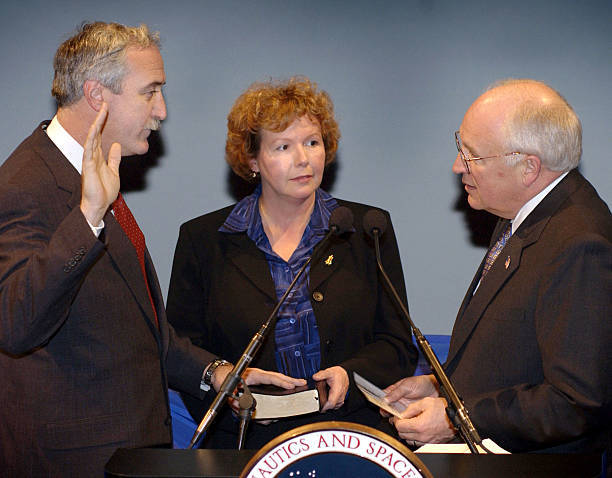
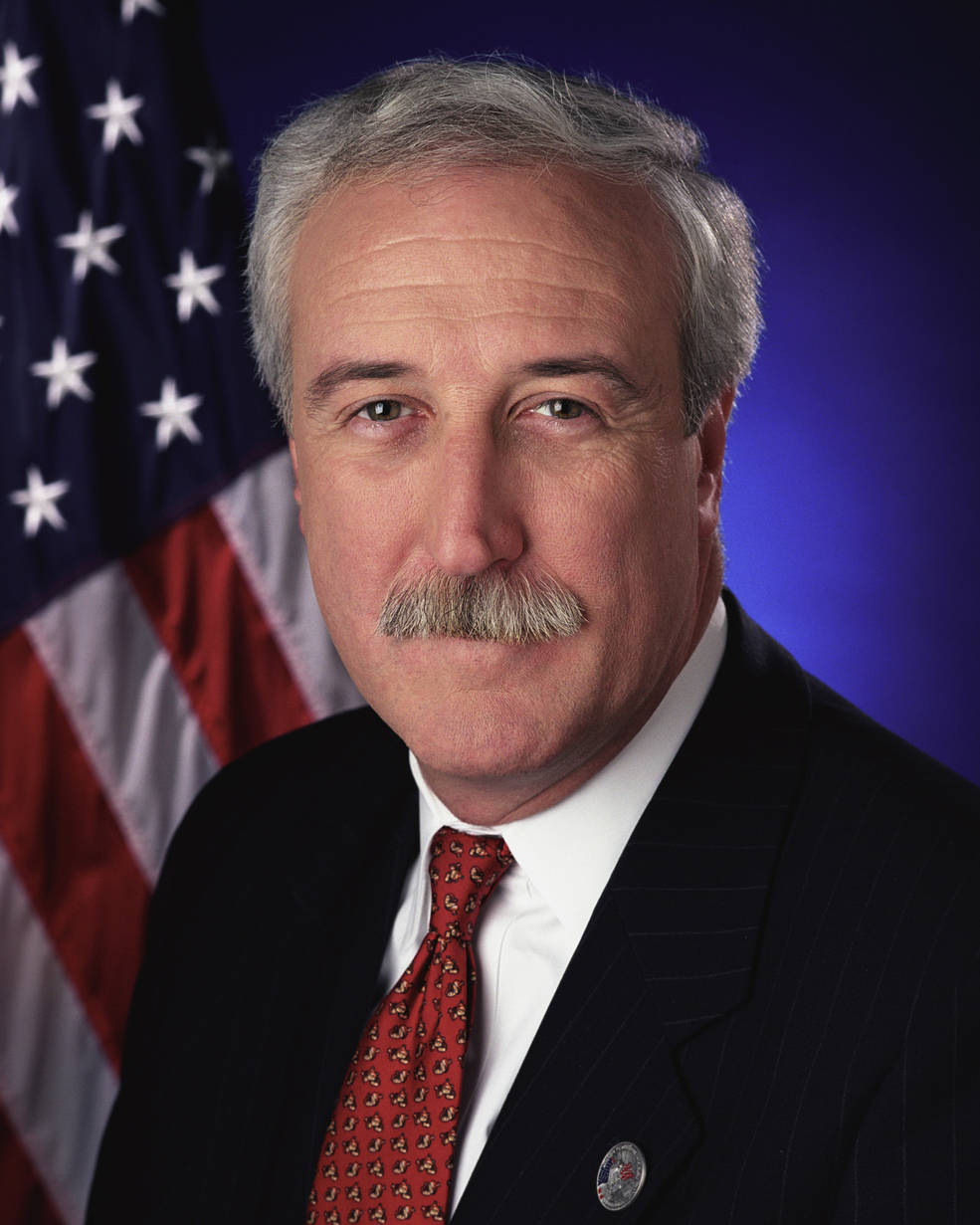
Left: Vice President Richard B. “Dick” Cheney, right, swears in Sean C.
O’Keefe, left, as NASA’s 10th administrator as O’Keefe’s wife Laura
looks on. Right: Official NASA portrait of Administrator O’Keefe.
President Bush nominated O’Keefe, at the time serving as deputy director of the Office of Management and Budget (OMB), to succeed Daniel S. Goldin, NASA’s longest serving administrator, who retired on Nov. 17, 2001. With a vacancy in the NASA deputy administrator position at the time, Associate Deputy Administrator Daniel R. Mulville served as interim acting administrator until the Senate confirmed O’Keefe on Dec. 21. O’Keefe’s first significant task as NASA administrator, and one he already tackled while at OMB, involved a $4.8 billion cost overrun of the space station program. In addition to applying his management and business skills to the problem, O’Keefe appointed William H. Gerstenmaier as program manager for the space station. Within the first year of his tenure as administrator, he had mitigated the budget problem.
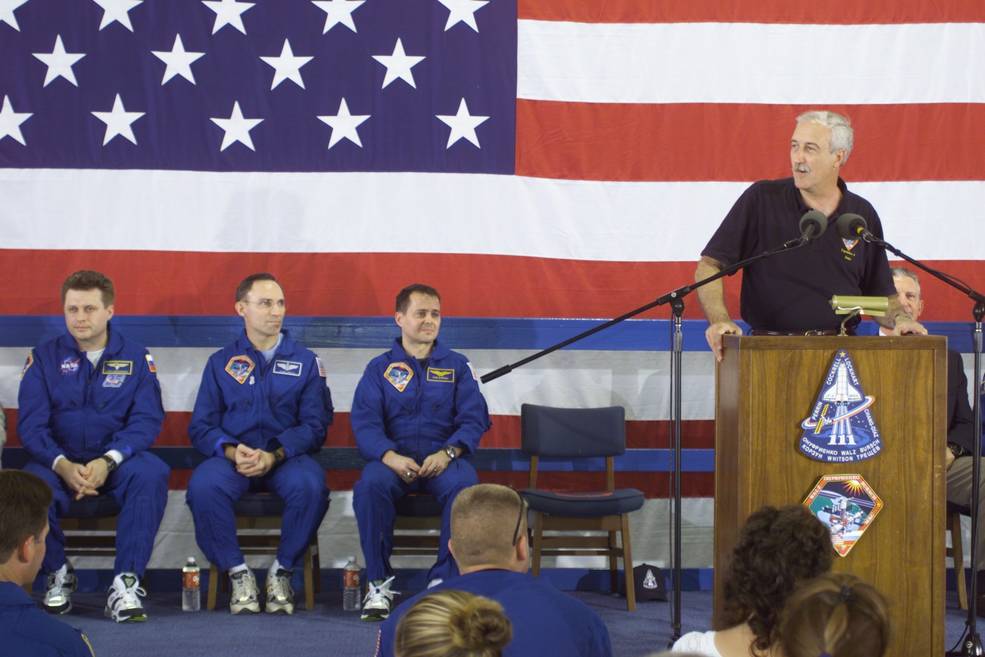
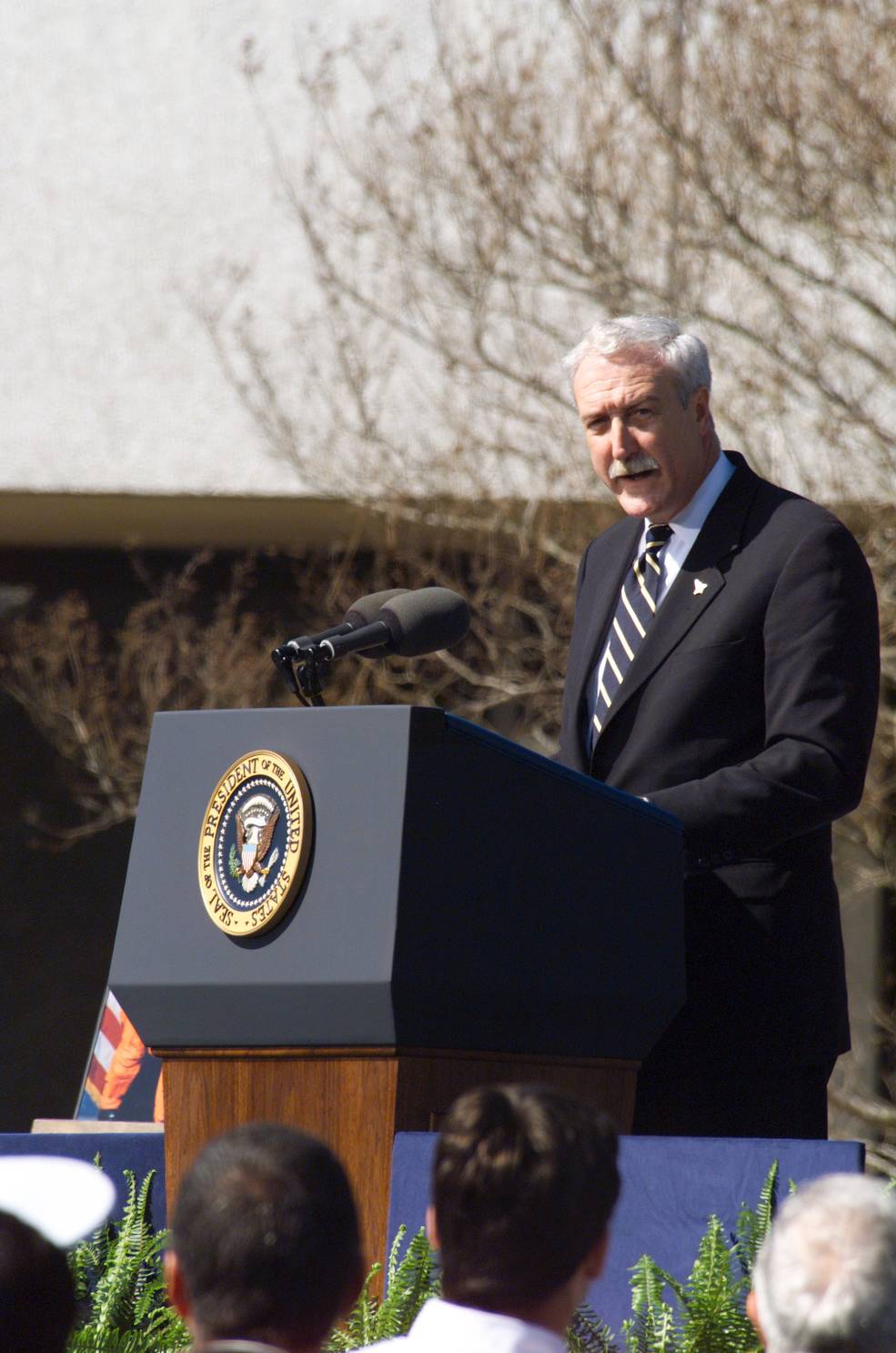
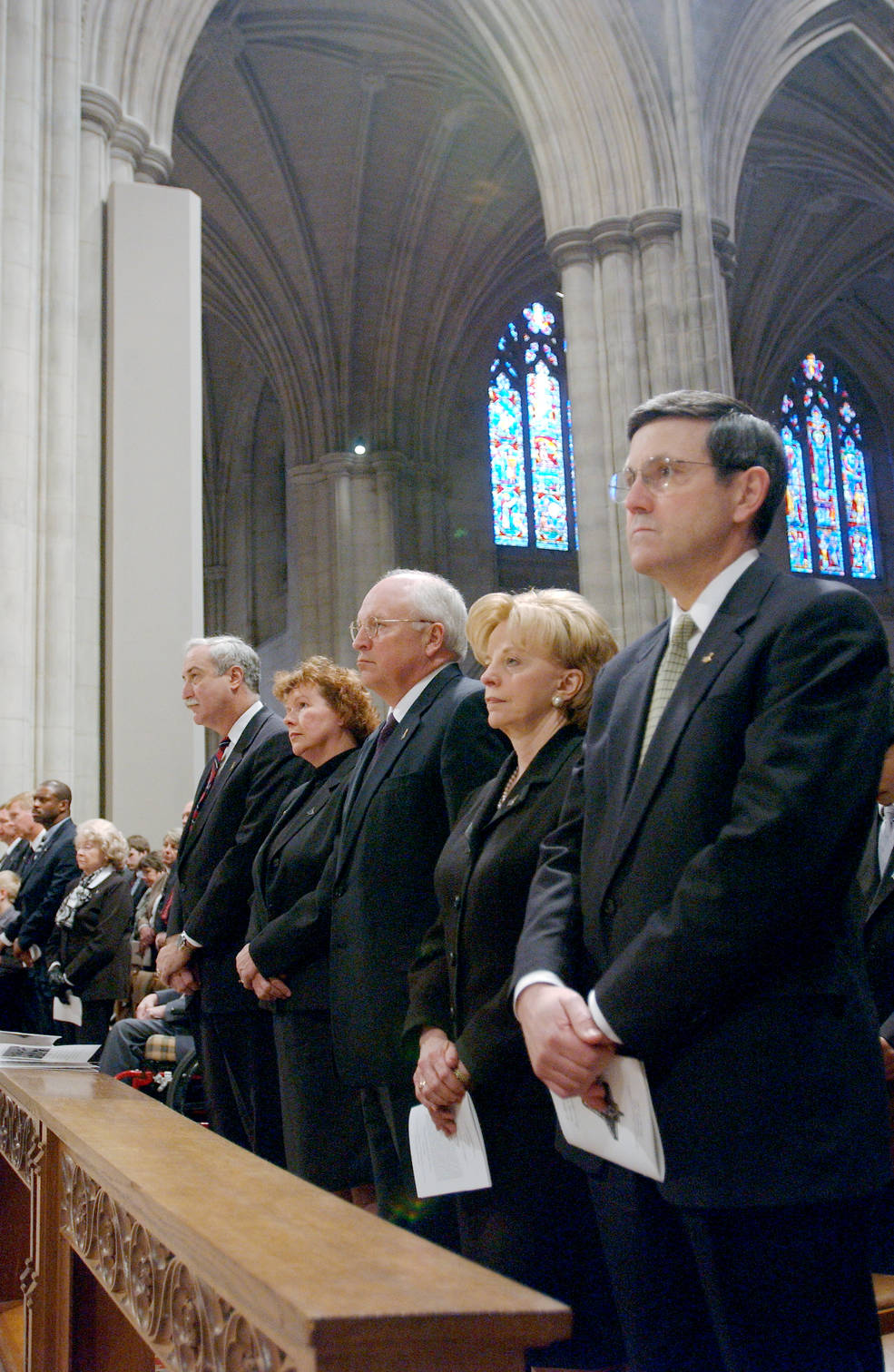
Left: At Houston’s Ellington Field, NASA Administrator Sean C. O’Keefe, right at podium, welcomes home the STS-111 crew that included returning Expedition 4 crew members Yuri I. Onufriyenko representing Roscosmos, left, and NASA astronauts Carl E. Walz and Daniel W. Bursch from the space station. Middle: O’Keefe speaking at the Columbia astronauts’ memorial service at NASA’s Johnson Space Center in Houston.
Right: O’Keefe, left, at the memorial service for the Columbia crew at
the National Cathedral in Washington, D.C.
On Feb. 1, 2003, space shuttle Columbia broke apart during reentry just 16 minutes from landing at NASA’s Kennedy Space Center in Florida, with the loss of its seven crew members. Administrator O’Keefe steered the agency through the painful mourning process and the investigation into the accident that followed. The Columbia Accident Investigation Board (CAIB), led by Admiral Harold W. “Hal” Gehman, found not only the technical issue that led to Columbia’s breakup, namely the foam strike during launch, but also problems with NASA’s overall safety culture. O’Keefe led NASA’s efforts to implement the changes recommended in the CAIB’s final report. With the space shuttles grounded following the accident and the need to keep the space station operating in Earth orbit, O’Keefe negotiated with Roscosmos to use Soyuz spacecraft for crew rotations and Progress vehicles to resupply the orbiting lab with the required supplies until the shuttles resumed flying.
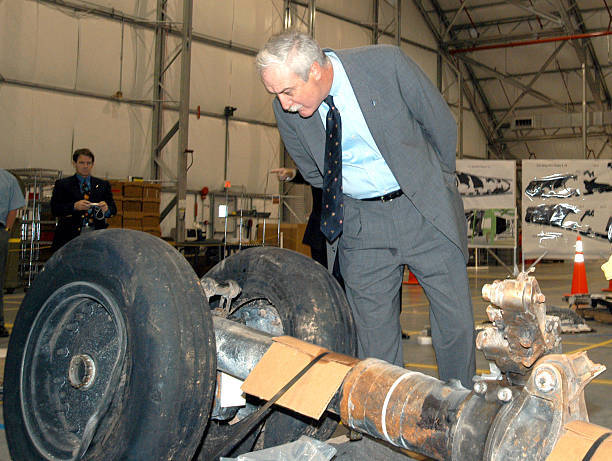
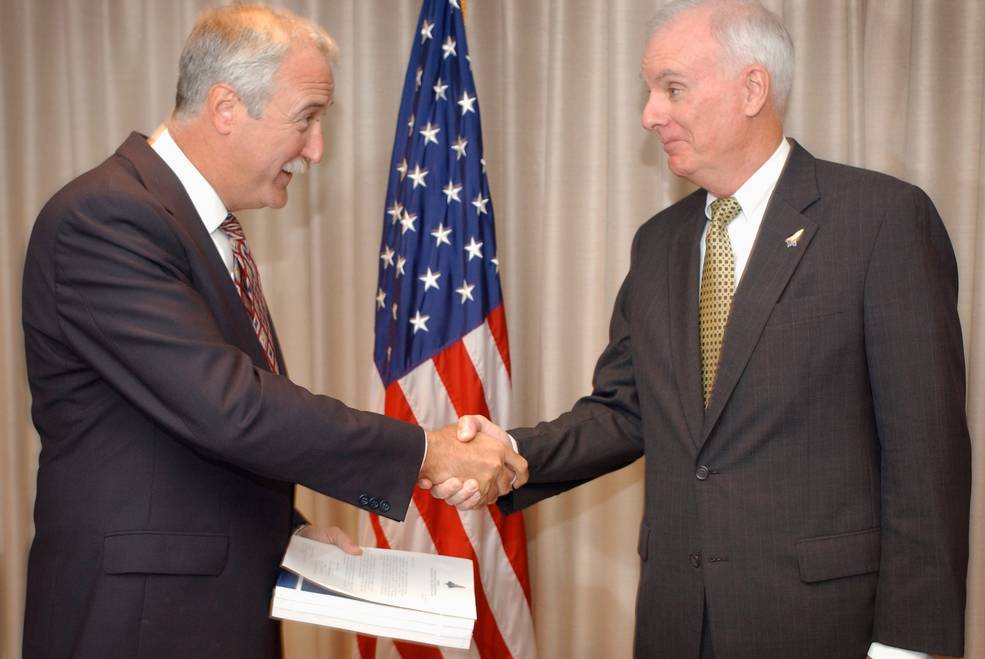
Left: In April 2003, NASA Administrator O’Keefe inspects debris from space shuttle Columbia in a hangar at NASA’s Kennedy Space Center in Florida. Right: In August 2003, O’Keefe, left, accepts the final report of the Columbia Accident Investigation Board from its chair, Admiral Harold W. “Hal” Gehman.
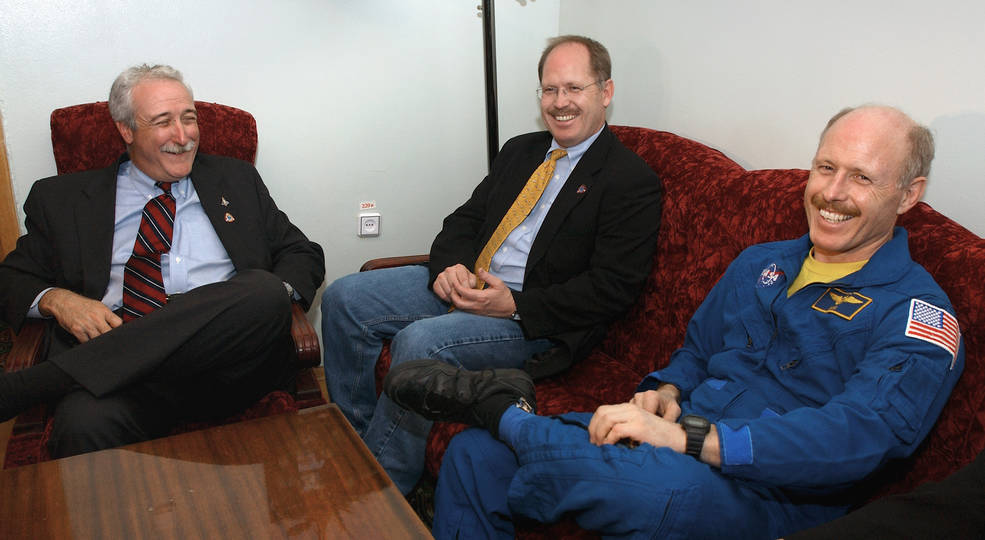
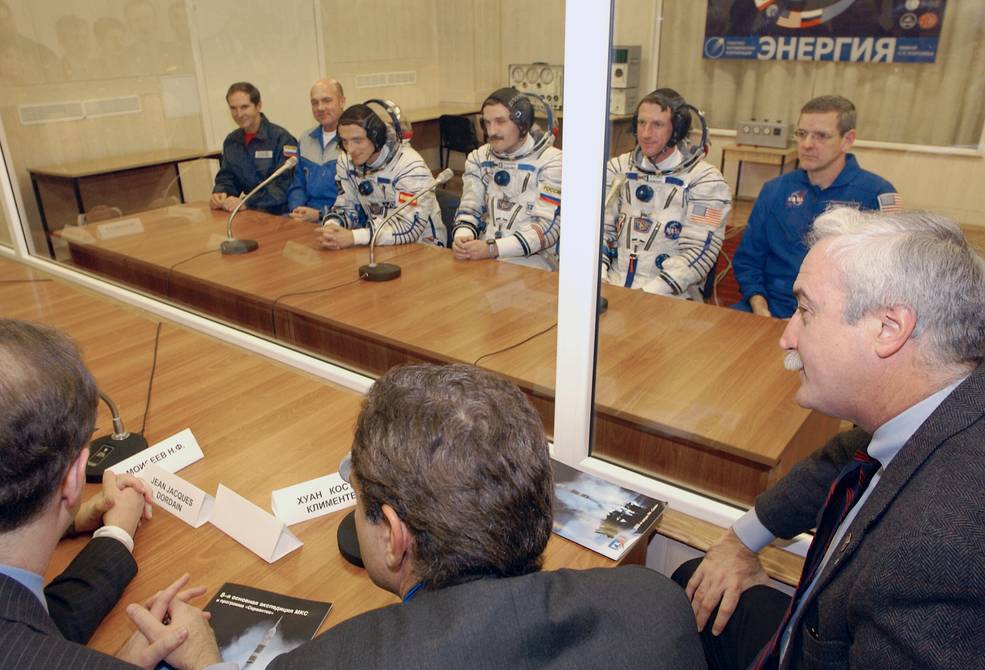
Left: In May 2003, in Star City, Russia, NASA Administrator Sean C. O’Keefe, left, welcomes home space station Expedition 6 astronaut Kenneth D. Bowersox, right, as Bowersox’s brother Keith looks on. Right: In October 2003, at the Baikonur Cosmodrome in Kazakhstan, O’Keefe observes the final prelaunch press conference with the prime and backup Expedition 8 crews.
In January 2004, O’Keefe along with the rest of the agency, celebrated the successful landings of the Mars Exploration Rovers Spirit and Opportunity, both of which far exceeded their expected lifetimes and vastly expanded our understanding of the Red Planet. That same month, O’Keefe made the controversial decision to cancel the final space shuttle mission to service the Hubble Space Telescope. He considered the flight too risky because the astronauts would have no safe haven capability should their vehicle suffer damage that would prevent their ability to perform a safe reentry. While CAIB members supported his decision, many astronomers felt the continued operation of the Hubble Space Telescope merited the risk of the repair flight. O’Keefe’s successor ultimately reversed the decision and the final Hubble Servicing Mission flew successfully in 2009, ensuring continued operation and science return from the telescope.
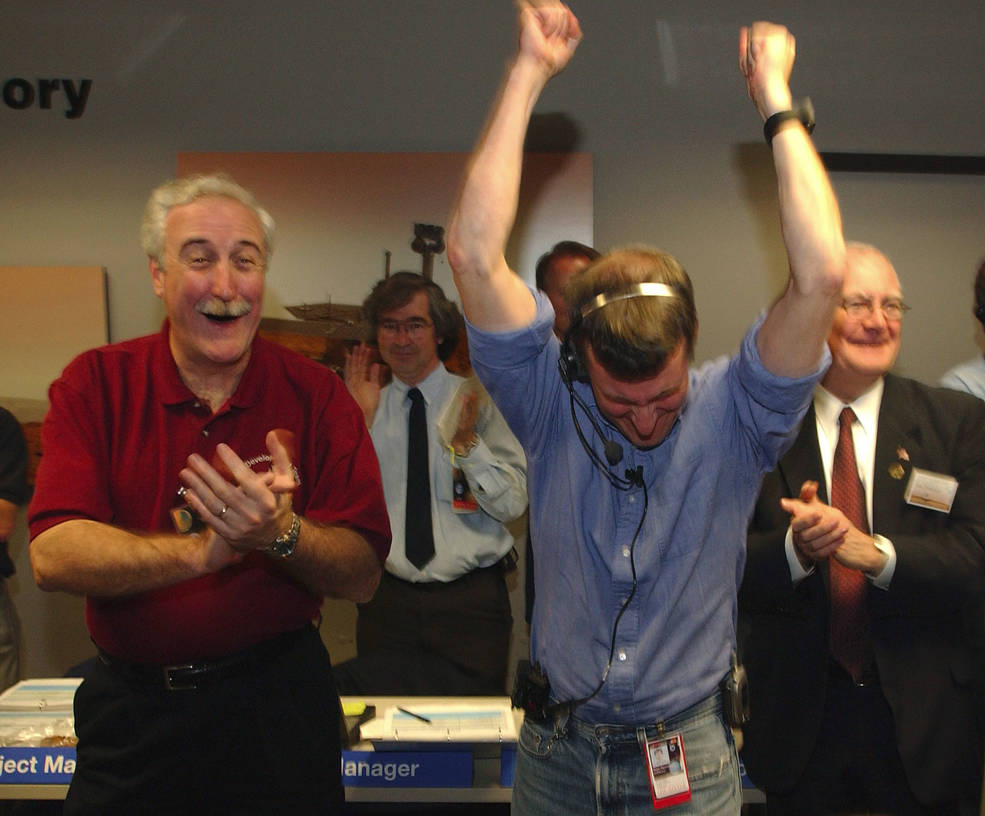
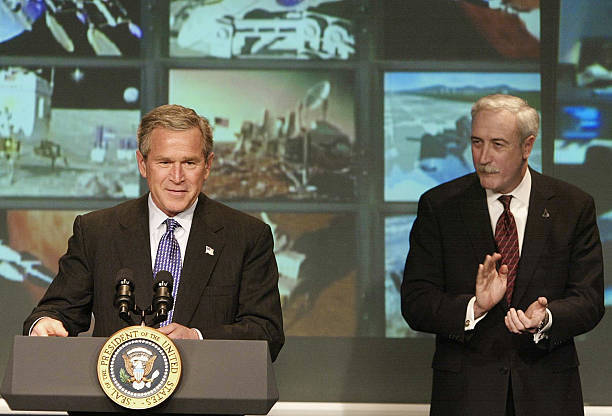
Left: At NASA’s Jet Propulsion Laboratory in Pasadena, California, NASA Administrator Sean C. O’Keefe celebrates the successful landing of the Spirit rover on Mars. Right: O’Keefe, right, applauds as President George W. Bush announces the Vision for Space Exploration at NASA Headquarters in Washington, D.C.
On Jan. 14, 2004, at NASA Headquarters in Washington, D.C., President Bush announced his Vision for Space Exploration (VSE) to return astronauts to the Moon and eventually send them on to Mars. To fund the exploration program, he directed NASA to retire the space shuttle fleet following completion of space station assembly, then planned for 2010. President Bush also directed NASA to develop a crew exploration vehicle to begin flying by 2014. The VSE envisioned participation by international partners and commercial entities. To implement the VSE, O’Keefe reorganized NASA’s management structure, including the establishment of the Exploration Systems Mission Directorate with primary responsibility for developing the mission architecture and technologies needed for exploration missions.
O’Keefe announced his resignation from NASA on Dec. 13, 2004, effective Feb. 11, 2005, to become chancellor at Louisiana State University in Baton Rouge. Deputy Administrator Frederick D. Gregory served as acting administrator until the Senate confirmed Michael D. Griffin, who assumed the position of NASA 11th administrator on April 14. Astronomers named asteroid 78905 Seanokeefe in honor of his role as NASA administrator. O’Keefe and his son Kevin survived a plane crash in Alaska in August 2010.

























